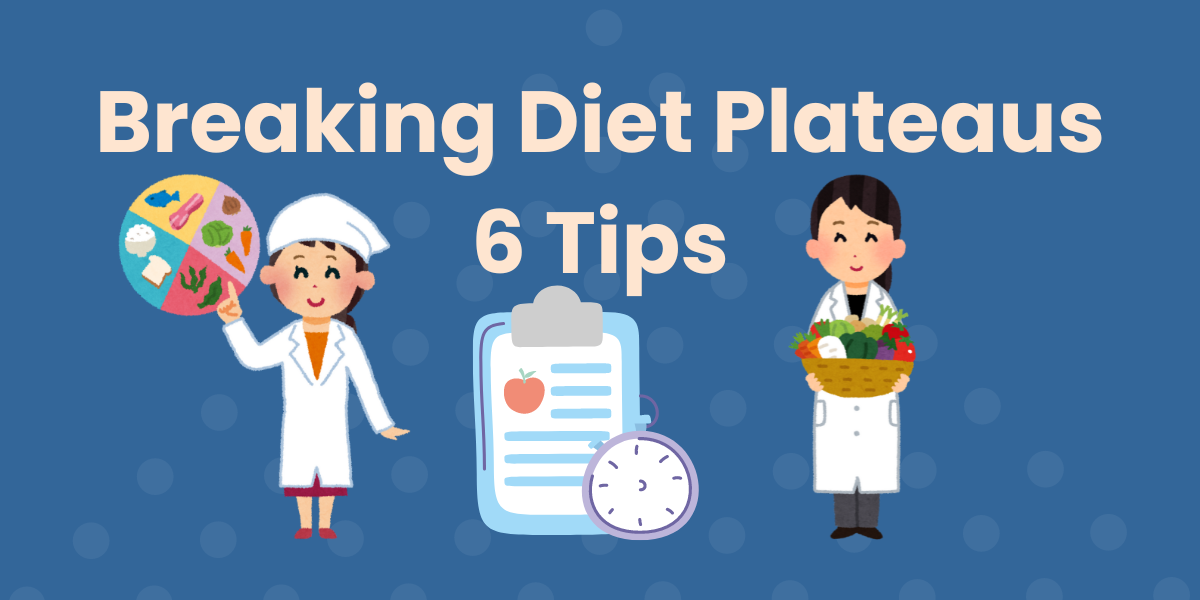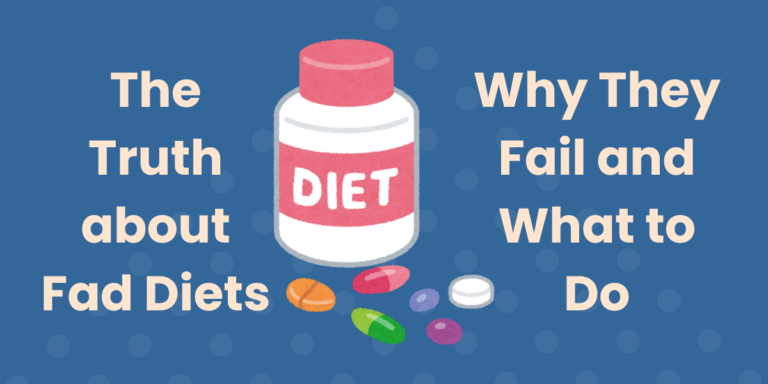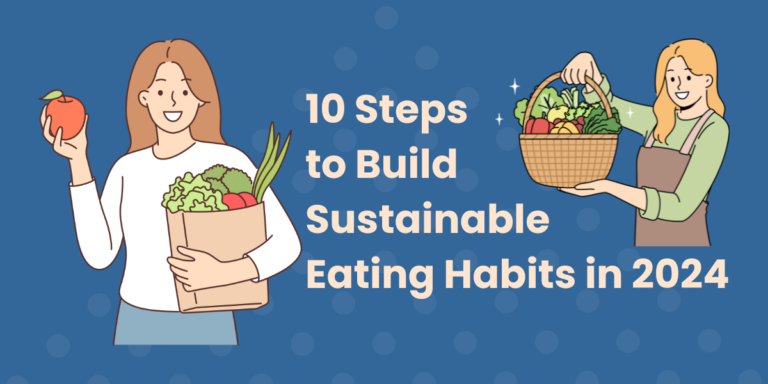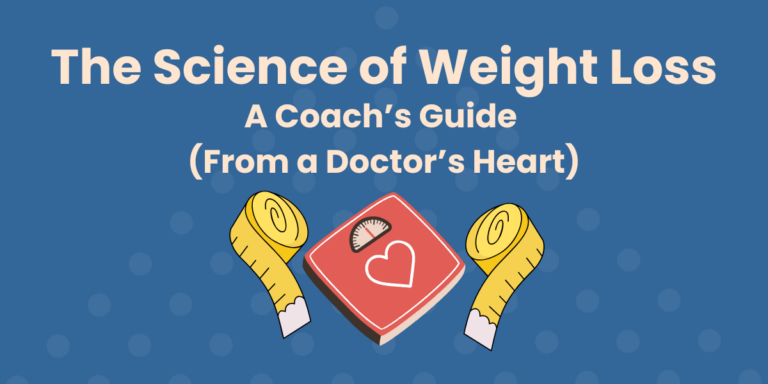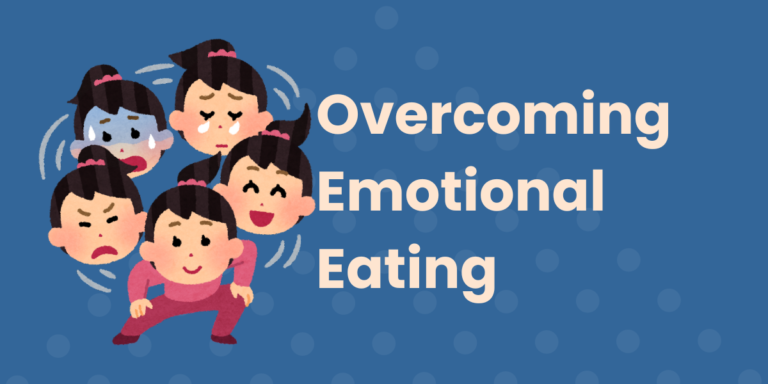Breaking Diet Plateaus: 6 Tips From a Wellness Coach
You can do everything right, and still hit a wall.
So what do you do?
Some people tweak their diets. Other people shake up their exercise program. There is also advice on sleeping well, managing stress, and maintaining hydration.
All these things are important to optimize body functions and create the conditions for better weight loss.
However there is one major flaw in this line of thinking:
Your body is designed to save energy in order to keep you alive.
In essence, you fight your body. The contenders – weight loss versus weight gain. Who wins?
From the body’s perspective, losing weight to be healthy is a contradiction!
Therefore this is the wrong mindset.
Do you think Olympic athletes train to see who lost the most weight every four years?
They train to be the strongest and fastest. They train to be the best version of themselves; and it so happens that this version wins the gold!
As we go through some common advice for breaking through diet plateaus, let’s examine your mindset.
Let’s win the gold!
Go to the end for an unusual bonus tip!
Understanding Diet Plateaus: Why They Happen
Definition of a diet plateau
Diet plateaus are weird.
The harder you try to lose weight, the easier it seems to gain weight.
So now you have to put in double or triple the effort just to maintain your current weight.
Eventually you give up and put on double or triple the weight you lost!
So what’s happening?
Common reasons for hitting a plateau – A tale
Once upon a time, there lived an old man. He was quite happy and cozy next to his fireplace.
One day, he felt the chill in the air. So he decided to chop some extra lumber for the harsh winter ahead.
“Now I am ready for winter”, he said.
The days grew cold; but some days were colder than others. So he burned more wood in his fireplace.
Soon he realized that he cannot burn wood at this rate if he wants to survive the winter.
So he calculated what he had left and said to himself, “Better to be cold, than to be frozen.”
He leveled off the use of his fireplace and survived the winter.
“If I want to be warm next winter, I should be better prepared.” So he set to work building a bigger shack and storing more wood.
Now he felt safe and ready for the next cold winter.
Why plateaus are a normal part of the weight loss process
As we can see, the old man reached a “plateau” in order to survive. Additionally, he made sure to build up extra stores to avoid a similar problem in the future.
Smart!
Your body is equally smart.
Your body adjusts its metabolism and hormonal balance to survive. Survival is priority #1.
So if you suddenly decide to burn extra lumber (exercise) or store less lumber (restrictive dieting), then your body will adjust the use of your fireplace (metabolism).
Therefore simply exercising more and eating less is not a long-term solution.
Your body will think it’s going through a really bad winter. If it survives, then your body will take steps towards mitigating the threat to survival.
In other words, the body packs on additional pounds.
So how do you meet your weight loss goals?
The psychology of plateaus and their impact on motivation
At this point, people get discouraged and give up.
Let your discouragement be your teacher.
Ask yourself some important questions:
- What makes weight loss important to you?
- What does that feeling mean to you?
- How would that feeling impact your life?
- How would that feeling permeate other areas of your life?
You have now discovered the true value of weight loss for yourself.
Remember: Weight loss is never the goal. You want to be the best version of yourself; and you want to be the best version of yourself in order to align with a value you cherish.
So what category do you want to win the gold?
Keep that in mind as we go on.
Tip 1: Shake Up Your Calorie Nutrient Intake

The concept of calorie cycling
The idea is to alternate days of restriction with days of no restrictions.
If that old man chose to use his fireplace willie-nillie, then he would either roast himself or freeze. Neither of these options are good for survival or well-being.
This process throws your metabolism for a loop and your hormones out of whack!
Instead of calorie cycling, try nutrient cycling.
Benefits of varying nutrient intake for breaking plateaus
There are thousands of chemical reactions that take place inside your body.
These reactions require different vitamins, minerals, and electrolytes.
So if you feed your body the same nutrients, you only support some reactions and neglect others.
Eventually, the other reactions slow down or stop because they don’t have the necessary tools.
This translates to stunted progress. Basically, you stall out.
Therefore a good mix of different nutrients can break plateaus or prevent them by supplying your body with the essentials to do its job effectively.
This translates to consistent energy, minimizing plateaus, and being more present in your life.
How to implement nutrient cycling in your diet
The simplest way is to visit the produce section.
I got my start by buying portable, snack-sized produce like carrots, broccoli florets, and apples.
I rinsed them and ate them as is. Or I put them in a baggie and brought them to work.
Even if I had a treat from the break room, I would still be satisfied knowing that I ate my snack from home too.
Why?
Because I’ve shifted my mindset away from losing weight and towards nourishing my body.
Overtime, my focus on nourishment brought more produce into my life and break room snacks simply fell away.
As a result, the weight fell away, the energy returned, and I feel well.
Potential risks and considerations
You need to be cautious of landmines even if you “eat healthy”.
Be mindful of your chronic conditions and speak with your doctor if you plan to change your diet.
For example:
- Congestive heart failure – Avoid salt as much as possible. Salt hides in surprising foods. Don’t believe me? Check the nutrition facts of that sweet treat.
- Chronic kidney disease – Look after your potassium levels. High or low potassium can mess with your heart’s ability to pump blood.
- Diabetes – Simply cutting back on carbohydrates may cause your blood sugars to go too low. This is more dangerous than high blood sugars!
- Hypothyroidism – This condition can slow your metabolism a lot! Which means you might easily pack on the pounds.
- Anticoagulation therapy – There are “healthy” options that can interfere with medications. Grapefruit and broccoli might be healthy for most people, but can cause problems for people on warfarin.1
These are just a few important conditions you must talk with your doctor about.
Tip 2: Fine-Tune Your Macronutrient Balance
Understanding macronutrients (protein, carbs, fats)
What team are you on?
- Team Protein
- Team Carbs
- Team Fat
- Team Balanced
It seems people tend to villainize specific nutrients.
Nutrients are nutrients; plain and simple.
You cannot live without proteins, fats, and carbohydrates.
There are different types of proteins, fats, and carbohydrates; and some types are healthier than others.
There is a lot of information out there. A lot is true, and a lot more is false. So we need to focus our mind.
With a focus on nourishment, we can pay attention to balance.
Balance your macro- and micronutrients.
Did you eat a little more carbohydrates for this meal? Then consider having a little more fiber and protein at the next meal.
Do you feel fatigued after eating that burger with no tomato or lettuce for lunch? Try a grilled chicken salad for dinner to lift up your energy levels.
A focus on nutritional balance helps you count nutrients instead of calories.
Adjusting macronutrient ratios for optimal fat burning
Do we need to break this down to a science?
Most of us just want more energy to play with our kids in the backyard and enjoy family vacations.
I just want the spirit to discover the world and an able body to move freely.
So if your energy dips, ask yourself a couple questions:
- How long has it been since I’ve eaten something?
- What did I eat?
- Did I eat something that I know causes me to feel fatigued?
- What can I do to counteract this effect?
- Should I do something to counteract this effect? Or simply allow my body to recover?
- What can I do to avoid this outcome in the future?
Asking these questions will help you adjust your macronutrient intake.
Again, the focus is not necessarily on fat burning.
Focusing on nutrition and how our bodies respond to meals can help us figure out how to maintain our energy levels.
Burning fat simply comes as a happy side effect of our true goal:
To further align with our values in this life.
The role of protein in maintaining muscle mass during weight loss
Protein is surprising.
You will never meet a more versatile substance.
You can turn a lean protein like a chicken breast into carbohydrates or fat.
You can also repair your own muscles and build up muscle.
Protein will build red blood cells, support your immune system, create hormones, maintain all your organs and muscles, and even repair skin damage and make your hair grow.
So why are we focused solely on maintaining muscle mass during weight loss?
Granted, extra muscle uses more energy. Therefore the body will burn fat to support the extra muscle.
However we must not lose sight of protein’s primary function:
To support life.
Protein shakes and the like seem designed to support muscle recovery and growth; which consequently supports fat loss.
However, be mindful that these shakes and powders may not support your whole body.
So while maintaining muscle mass is important during weight loss, remember that protein’s role goes far beyond that function.
Protein is there to nourish your entire being, support your body’s complex systems, and help you become the best version of yourself.
When you shift your focus from just “maintaining muscle” to “thriving overall,” you might find that your weight loss journey becomes more holistic and sustainable.
Tip 3: Revamp Your NEAT Workout

Walking ain’t flashy, but it’s important
Everybody knows a few things:
- Our body’s are designed to move.
- Moving our bodies is important for optimal health.
- Brisk walking for 30 to 45 minutes daily is all you need.2
People get into weight-lifting, high-intensity interval training (HIIT), CrossFit, martial arts, the list goes on.
Every type of exercise has its advantages and may meet your unique needs and fit your individual style.
However I like to start with simple things.
What makes walking so simple?
Even though it’s actually complex, most of us have started walking around 12 months of age.
Walking comes naturally to us.
Top Tip: The body is most likely to use fat for energy when the sugar reserves are depleted in the morning. Therefore walking before breakfast helps burn fat directly. (WARNING: If you have diabetes, then consult your doctor before attempting to use this tip.)
Bonus Tip: Walking after dinner takes advantage of the higher blood sugar levels from your meal. This helps people with diabetes. This also keeps sugar storage lower which you can take advantage of the next morning to dip into fat stores quicker. (WARNING: If you have diabetes, then consult your doctor before attempting to use this tip.)
Introducing non-exercise activity thermogenesis (NEAT)
The best kept secret is that you don’t need to exercise to burn calories… Not formally anyway.
We burn calories simply by existing.
We burn calories by standing, talking, typing on the keyboard, reaching for papers, holding the tablet while reading an article, playing the guitar, raking leaves into a pile and jumping into it, playing with our kids, the list goes on.
The key is to simply move your body.
Although a formal exercise regimen has extraordinary benefits, finding new ways to move in your world helps immensely. Don’t believe me?
A study compared overweight and lean people who do not exercise.
Here’s the question: Why are lean people lean?
The study found that the lean people tend to be on their feet two and a half hours more than their overweight peers.
As a result they burned 350 more calories per day.3
That does not sound like a lot; until you think about the fact that one pound of fat is about 3,500 calories.
This means lean people essentially burn about 1 lb of fat every 10 days just by NEAT activities!
Incorporating NEAT to boost metabolism
So how do you actually do this?
I have no doubt you’ve heard all the advice before:
- Take the stairs instead of the elevator/escalator.
- Park further away from the door.
- Walk to your coworker to deliver a message.
- Use a standing desk.
- The world is your playground. Use it.
We all know what to do. We just… don’t.
So here are some questions to ponder:
- What did you choose to do instead?
- How did that benefit you? (There is usually a benefit like convenience or saving time)
- Did you have different priorities?
- What obstacles did you encounter? Can you expect to see them again? What then?
- Where do we go from here? What’s the first step you could take after reading this article?
We intuitively know what to do; and I don’t mean ideas we’ve been told.
These questions create the space to let your own ideas rise to the surface.
Then you can choose which one fits you best.
Tip 4: Prioritize Sleep and Stress Management
The link between sleep, stress, and weight loss plateaus
Not many people realize the restorative powers of sleep.
Sleep rebalances the physical and energetic bodies.
These days, sleep is the only chance we have to decompress from the stressors that plague us every day.
Strategies for improving sleep quality and duration
If you can tell yourself, “I know I should do…”, then you know the strategies.
So the real question is: Why aren’t you doing them?
Our minds often bombard us with reasons why we cannot – work stress, family obligations, or simply feeling unappreciated.
What you need are personal strategies to improve your sleep quality; Strategies that actually fit your unique life circumstances; Strategies that can adapt as your life evolves.
Where do you find these strategies?
Remember: The problem is never the problem.
So we start by shifting our focus and asking some important questions:
- Is better sleep what you really need to focus on?
- Is the stressor what you really need to focus on?
- What’s really keeping you up at night?
- Can you tell me what is underneath the stress and sleep loss?
- What emotions are coming up that need to be experienced and released?
- What’s the payoff for keeping them bottled up?
- What small step can you take towards peace today?
By exploring these deeper questions, you might find that your sleep naturally improves as you address the root causes of your stress and anxiety.
How cortisol affects weight loss and how to manage it
How does all this introspection help with weight loss?
We can never know all the science, but we know enough to realize that poor sleep and stress leads to unusual cortisol levels; and cortisol makes weight loss difficult.
So how do you manage it?
Stress-reduction techniques (meditation, yoga, deep breathing)
Remember the trick: The problem is never the problem.
These techniques might be called, “stress-reduction techniques”, but they do not reduce stress directly.
Techniques like meditation, yoga, and deep breathing were originally designed to realign your body, mind, and spirit.
Of course, science can observe the physiological effects from consistent practice (ie: lower cortisol levels).
However, the true value of these techniques creates an impact on a visceral and profound level deep within us.
Most people attribute this idea to the rich depths of the mind (often thinking of the brain). However even the mind is mysterious and cannot be attributed to just one organ.
Therefore you would be best served by practicing these techniques with an open mind.
I don’t mean open to illogical practices that seem “woo-woo” in nature.
I mean for you to maintain an open mind to any thoughts, emotions, images, and feelings.
We have suppressed and repressed these experiences to our ailment.
Take time to let them find their way out.
As you explore these practices, remember that the goal is not to achieve a perfect state of zen or to become a yoga master overnight.
The goal is to create space in your life for self-discovery and true growth.
- Start small – maybe with just five minutes of deep breathing each day.
- Notice how it feels, what thoughts arise, and how your body responds.
- Over time, you might find that these moments of mindfulness ripple out into other areas of your life, helping you make more conscious choices about your health, your relationships, and your overall well-being.
The journey of stress reduction is deeply personal. So be patient with yourself and celebrate the small victories along the way.
Tip 5: Stay Hydrated and Mindful of Hidden Calories
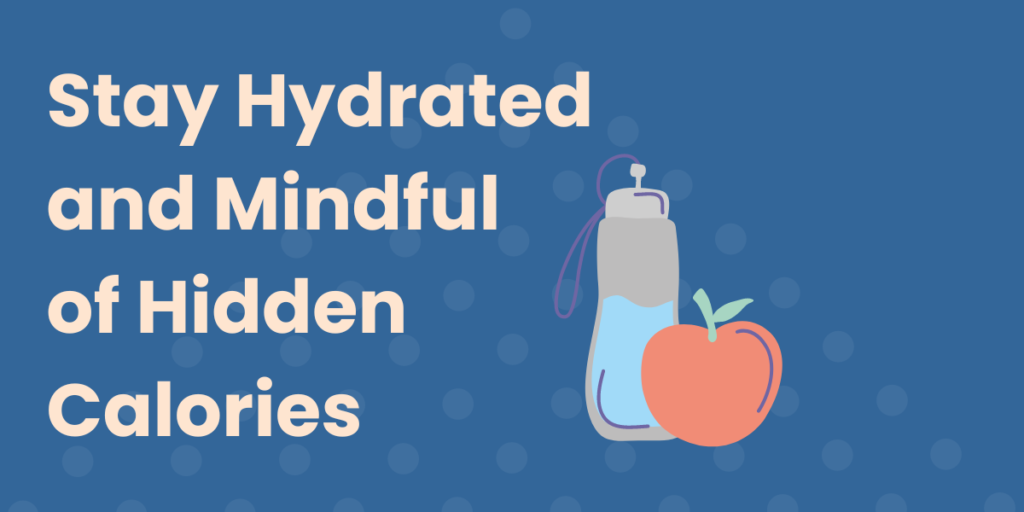
The importance of proper hydration for breaking plateaus
Our biology demands water.
Simple.
Water plays three important functions:
- Every chemical reaction in our bodies takes place inside water.
- Many of these reactions also use water to glue together or take things apart.
- Water is also used to create new things.
So if water plays such a pivotal role in life, we can reasonably assume that adequate hydration can break plateaus and optimize progress.
Tips for increasing water intake throughout the day
I’ve seen enough water bottles at work to know that people got the message:
Water is important.
I also know that people find creative ways to improve their water intake.
So I actually learn tips from other people by asking a few questions:
- Why is hydration important to you?
- Why do you want to stay hydrated?
- Is it just because you’ve heard it’s good for you, or is there a deeper reason?
- Is it about health, energy, or something else?
Maybe you’ve noticed you have more energy when you’re well-hydrated, or perhaps you enjoy the ritual of sipping water throughout the day.
Whatever your reason, use it as motivation.
Some practical tips:
- Start your day with a glass of water,
- Set reminders on your phone, or
- Try infusing your water with fruits or herbs for added flavor.
Remember, the best hydration strategy is the one you’ll actually stick to every day.
So find what works for you and make small, consistent changes to make it a natural habit in your daily routine.
Identifying and eliminating hidden calories in your diet
Pop, dessert, candy: We know where the calories hide… don’t we?
Have you checked the nutrition facts on your favorite sauce? Or the ingredients list for your favorite “healthy” meal, snack, or beverage?
Coffee, granola bars, yogurt, condiments are a few surprising calorie bombs.
The key here is not to obsess with reading every label, but to become more aware of what you put into your body.
Start by checking the labels of foods you eat regularly. You might be surprised!
Use this knowledge not to restrict yourself, but to make more informed choices.
Maybe you’ll decide that your favorite high-calorie sauce is worth it because you truly enjoy it. Or perhaps you’ll find a lower-calorie alternative that you like just as much.
The goal is mindful eating, not perfection.
Here’s a challenge:
- Pick three of your regular food items and study their nutrition labels.
- Be aware of the choices you have made.
- Do not deprive yourself.
- Be informed.
- Decide what aligns with your goals and values.
The impact of alcohol on weight loss progress
Most people focus on the extra calories of alcohol.
So companies focus on creating low calorie beverages for the consumer.
However alcohol has a bigger impact than simply adding calories.
- Alcohol interferes with your metabolism. Therefore you cannot effectively burn calories.
- If your liver is busy detoxing alcohol, then it has fewer resources to mobilize and burn fat stores.
- With fewer resources, your liver cannot effectively eliminate free radicals which can cause damage and impair cell function.
- A host of many metabolic problems.4
So that drink creates a slew of issues which upsets the body’s balance.
Given these issues, it’s worth reflecting on your relationship with alcohol.
If you choose to drink, do so mindfully. Consider:
- The occasion.
- Your goals.
- How you want to feel the next day.
Maybe you decide to limit alcohol to special occasions, or perhaps you explore non-alcoholic alternatives.
Remember, it’s not about deprivation, but about making choices that align with your overall health and wellness goals and values.
Tip 6: Track Progress Beyond the Scale
Alternative methods for measuring progress (body measurements, progress photos)
People use external cues to measure progress.
They fight the bathroom scale, scrutinize that pudge in the mirror, shimmy into those favorite jeans, post before and after photos on social media, use tape and calipers for precise body measurements.
Hardly anyone pays attention to what matters.
Do you feel better? How much better?
Are you able to spend more quality time with your family? How much more?
Can you experience the majesty of a gorgeous lake with your own eyes while hidden away between the mountains? Or do you have to settle for a digital rendition?
The importance of non-scale victories in maintaining motivation
The scale just measures your body’s weight; it does not measure you.
The numbers on that scale might give you a hit of dopamine, but that quickly fades when you pass by your favorite bakery and capture the scent of the delectable pastries in the air.
So you may win or lose battles.
Did that win or loss bring you into greater alignment with your values?
True victory is not just about the numbers on a scale. Real success is about the quality of your life.
Ask yourself:
- Can you play with your kids without getting winded?
- Do you feel more confident and clear-headed?
- Are you sleeping better at night?
These are real wins that matter.
Challenge: Keep a Victory Journal
- Write down one non-scale achievement every day.
- Choosing a healthy snack over junk food.
- Feeling energized enough to take an evening walk.
- Notice a pattern of positive changes over time.
- These changes go beyond weight loss.
- We are focusing on sustainable and meaningful progress.
- We are building momentum in a positive direction.
Setting new, challenging goals to keep momentum
Everyone knows the ingenious value of SMART goals.
However I would challenge you to redesign your goals with your values at heart.
Why?
Because your heart does not care about diet plateaus. Your heart cares about singing its song.
Your job is to harmonize your values so your heart plays a beautiful symphony.
For example, instead of, “I want to lose 20 pounds in 6 months”, try, “I want to hike that challenging trail I’ve always admired!” Or “I want to have the energy to dance at my friend’s wedding without feeling exhausted.”
These value-based goals tap into your deeper motivations. They’re not just about looking good or getting over a hump, but about living fully.
Ask yourself:
- What experiences am I missing out on because of my current health?
- What would I do if I felt truly vibrant and energized?
Let these answers guide your goal-setting process.
Remember, the journey to better health is not a straight line. It’s a winding path with ups and downs.
Embrace each challenge as an opportunity to learn more about yourself and grow stronger.
Bonus Tip: How Showing Gratitude for Your Weight Can Allow You to Release It

This thought is a bit bizarre:
Your plateau actually serves a beneficial purpose.
Don’t get me wrong, excess weight takes a toll on your health. Carrying extra weight impacts chronic diseases such as blood pressure and diabetes.
Additionally, there may be other chronic conditions that cause the plateau such as thyroid disorders.
However, the body is more than chemical reactions and hormones.
The body is alive with spirit and soul. Otherwise, we are little more than fleshy robots.
So here are some questions to consider:
- What has your weight taught you about yourself?
- How has it shaped your experiences and relationships?
- In what ways has it protected you or served you in the past?
- What strengths have you developed as a result of your journey?
- If your weight could speak, what message might it have for you?
Take a moment to truly feel gratitude for these lessons and experiences.
Then, if you’re ready, visualize yourself thanking your weight and gently releasing it. Allow your body to find its natural and healthy balance.
Remember, this journey is not about forcing change. Your journey is about creating space for transformation to occur naturally.
Now express gratitude and release it to the universe.
Conclusion – Breaking Diet Plateaus:
Breaking through a diet plateau isn’t just possible – they simply do not exist with the right perspective!
Remember: Plateaus are never the problem.
Understand your challenge and troubleshoot with these tips. Ask some personal questions.
Don’t let a temporary setback derail your progress.
You found a growth opportunity.
Let me know which of these strategies resonated and helped you the most.
I’m also eager to know how you applied them to break through your plateau!
References:
- Warfarin diet: What foods should I avoid? (2024). Mayo Clinic. https://www.mayoclinic.org/diseases-conditions/thrombophlebitis/expert-answers/warfarin/faq-20058443?sscid=91k8_avd78&
- Current Guidelines | health.gov. (2021, August 24). Health.gov. https://health.gov/our-work/nutrition-physical-activity/physical-activity-guidelines/current-guidelines
- Chung, N., Park, M. Y., Kim, J., Park, H. Y., Hwang, H., Lee, C. H., Han, J. S., So, J., Park, J., & Lim, K. (2018). Non-exercise activity thermogenesis (NEAT): a component of total daily energy expenditure. Journal of exercise nutrition & biochemistry, 22(2), 23–30. https://doi.org/10.20463/jenb.2018.0013
- Zakhari S. (2006). Overview: how is alcohol metabolized by the body?. Alcohol research & health : the journal of the National Institute on Alcohol Abuse and Alcoholism, 29(4), 245–254.

